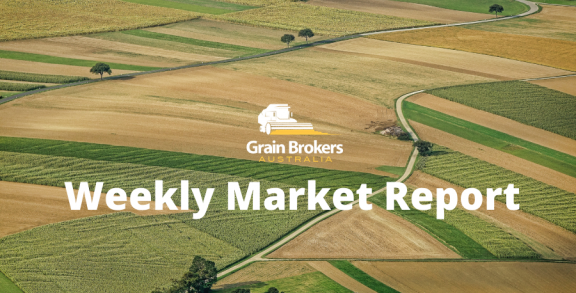
The feed barley tender announcement by the Saudi Arabian Grain Organisation (SAGO) late last week came hot on the heels of news that the kingdom is poised to abandon its state-issued grain tender program in favour of private sector importers.
The decision by the world’s biggest importer of barley is a significant step in the economic transformation program announced by the government in 2016. Saudi Vision 2030 is a strategic framework implemented to reduce Saudi Arabia’s dependence on oil and to improve the nation’s food security.
First announced by Crown Prince Mohammed bin Salman in 2016, the goal is to diversify the kingdom’s economy and develop public service sectors such as infrastructure, education, health, recreation, and tourism. Under the program, private enterprise will be encouraged to take a leading role in many of the initiatives.
Behind the scenes, independent of recent SAGO barley tenders, the privates have been active in engaging global barley exporters. There was a round of business done back in September and commitments from Australia alone are rumoured to be already as high as 500,000 metric tonne in the current marketing year.
The privatisation of barley imports was primarily facilitated by a change in the kingdom’s animal feed policy back in January of this year. Historically the government directly subsidised all grain and feed imports (except for hay), but now payments are made directly to livestock and poultry producers based on production.
Small livestock farmers are the major consumer of imported feed barley, and they are now given cash payments based on the number of animals they are rearing. They must have a maximum of 300 animals in the four eligible livestock categories: goats, sheep, camels and cattle.
All farmers who qualify for the scheme receive monthly grants of US$2.13 per head for goats and sheep, US$10.67 per head for camels, and US$16 per head for cattle. The Saudi government has allocated a total budget of US$320 million a year to the program.
The payment regime is a little more intricate for the poultry industry, where the government has allocated up to US$187 million annually. The subsidies vary according to the type of production and are intended to incentivise producers to improve biosecurity protocols and adopt technology that increases efficiency and productivity.
In the World Agricultural Supply and Demand Estimates (WASDE) report released last week, the USDA pegged Saudi Arabian feed barley imports at 7.3mmt for the 2020/21 marketing year. This figure was down 0.2mmt from the October forecast but up slightly from 7.2mmt in the twelve-months to the end of June 2020. The major sellers into the kingdom in recent years have been the European Union and leading Black Sea producers, Russia and Ukraine.
The WASDE report called global barley production 156.4mmt for the 2020/21 marketing year. This is down around 0.4mmt from its October estimate, with small falls in Turkish and the European Union production the prime contributors to the downward revision. Total world trade was increased 0.5mmt with China and Iran the big movers, up 1.2mmt to 6.5mmt and down 0.5mmt to 2.5mmt respectively.
The USDA held its Australian production estimate steady at 10.5mmt which seems extremely conservative compared to domestic trade forecasts, some of which are in excess of 13mmt. That said, it always seems to take the USDA a couple of months to catch up on reality outside of the US.
Australian barley export estimates for 2020/21 were also steady month-on-month at 4.4mmt, up from 3.2mmt in 2019/20. Again, that number is well below domestic trade estimates, many of which are above 5mmt, and growing.
Just how big that number becomes will depend to a large extent on Australia’s competitiveness into the Middle East over the next six months. At current values, Australia is hugely competitive into the Saudi Arabian Red Sea ports of Jeddah and Yanbu, and is the cheapest major origin into the Arabian Gulf destinations such as Kuwait, Qatar, United Arab Emirates and the Saudi Arabian port of Dammam.
The SAGO tender announced late last week was for a total of 720,000 metric tonne (mt) of animal feed barley in twelve shipments for arrival in January and February next year. Eight of those cargoes, or 480,000mt, are to be discharged at Red Sea ports and the balance are to be offloaded at the Arabian Gulf port of Dammam.
And it wasn’t surprising to see a clean sweep to Australian exporters when the tender results were released on Monday afternoon (Aussie time). Glencore and GrainCorp shared the Red Sea port sales with four cargoes apiece and the Arabian Gulf business went to Glencore and CBH, each selling two cargoes. While the offers are optional origin, most, if not all, are expected to be executed out of Australia.
In the end SAGO purchased 730,000mt at an average price of US$234.83 per metric tonne (/mt) including cost and freight. This is US$8.49/mt more than the mid-September tender for 540,000mt for November/December delivery and is US$36.20/mt above this season’s low. With freight at US$20/mt that equates to around US$215/mt free on board Western Australian ports, which is bang on replacement value today.
With a big barley crop currently hitting the silos, Australia needed to see some strong demand outside of Asia. Picking up such a large chunk of Saudi Arabian business is perfectly timed to counter the price pressure of a rampant harvest.
Call your local Grain Brokers Australia representative on 1300 946 544 to discuss your grain marketing needs.





